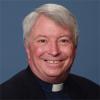In a special Earth Day, 2000, edition of Time Magazine, I came across an article on the Rev. Sally Bingham, an Episcopal priest serving Grace Cathedral in San Francisco. She, in partnership with Steve MacAusland, had founded Episcopal Power & Light. Episcopal Power & Light represented a coalition of Episcopal congregations that had purchased green power. Episcopal Power & Light soon became California Interfaith Power & Light with the participation in the collaborative of congregations from other Christian denominations and Jewish synagogues. The Interfaith Power and Light (IPL) movement has spread across the country where now 38 states and the District of Columbia have recognized IPLs.
I had attempted something similar when I was pastor of St. Vincent DePaul parish in Pontiac, Michigan back in 1992. But at the time no other congregation had expressed interest. Shortly after my parish of St. Elizabeth in Wyandotte was featured on public radio for putting solar panels and a wind turbine on the rectory in 2001 Rev. Bingham contacted me and we became friends. In 2002 Cardinal Maida granted me a year’s sabbatical to establish a Michigan Interfaith Power & Light [MiIPL]. I served as acting executive director of MiIPL until 2008. Currently I serve as Public Policy representative. At present approximately 135 houses of worship from across the entire State of Michigan [including the Upper Peninsula] participate in Michigan Interfaith Power & Light.
Interfaith Power & Light Vision
The Interfaith Power & Light movement’s vision, as Rev. Bingham told me in a recent interview, is based on the two-fold love command – love God and love your neighbor as yourself. And “you don’t pollute your neighbor’s air”. It is also recognition, from both the first chapter of the Gospel of John and the 15th chapter of Paul’s 1st Letter to the Corinthians, that not only did everything come from God but all things are to be reconciled back to God. And we are partners in that reconciliation.
What is unique in the Interfaith Power & Light vision isn’t just that participating congregations speak truth to power. Recently I and other IPL representatives were in Washington D.C. advocating in collaboration with partners such as the American Lung Association, Health Care Without Harm, and the NAACP, etc. on behalf of the Clean Air Act. However, we strive to walk our talk. We witness to the vision of Genesis 1 and the Sermon on the Mount by reducing our own ecological footprint and through creative partnerships between the faith community, sustainable businesses and government. Over 10,000 houses of worship across the country have been touched in some way by the IPL story. This happens across a wide variety of congregational life.
Creation Care Teams and Cool Congregations
Often a congregation is introduced to the connection between energy stewardship and faith through a prayer breakfast to which clergy are invited. In Michigan we have shown short videos such as Lighten Up at coffee and donuts sessions to interested parishioners. That is followed by a study session of perhaps six evenings where scripture, church teaching and present day climate science are explored. Each denomination has its own resources to which we can draw. Source material for a Catholic parish can be drawn from any of the following sources: Earth Ministry, Catholics and Climate, the National Catholic Rural Life Conference, the book Catholics Going Green, etc. The folk in the congregation become the conscience of the parish in addressing its own stewardship.
One exciting dimension that can serve as a guide is the Cool Congregations [www.coolcongregations.com] program that was developed through Iowa Interfaith Power & Light. Congregants gather together at a workshop where they are introduced to the concepts of carbon footprints and assess their own footprint. Participants provide targets as to the size of their footprint six months to a year out. There can be friendly competition among families or even among families as to who will see the biggest changes.




